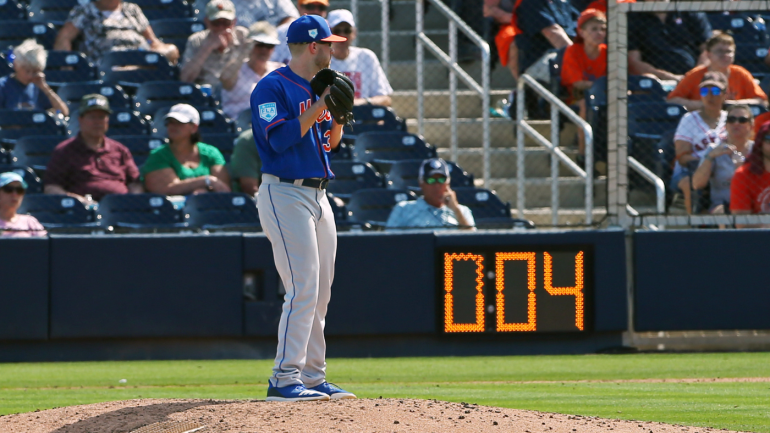
Earlier this month, Major League Baseball's competition committee voted to implement several rule changes for the 2023 season, including the installation of a pitch clock. As part of commissioner Rob Manfred's latest attempt to combat the sport's perceived pace-of-play issues, pitchers will have either 15 or 20 seconds to deliver their next offering, contingent on whether or not someone is on base.
MLB first tested out the pitch clock on the minor-league level, and the commissioner's office recently provided data to Ronald Blum of the Associated Press that indicated the average length of games has been reduced by 25 minutes.
Here's part of Blum's report on the matter:
The average time of minor league games dropped to 2 hours, 38 minutes in the season that ended Wednesday, according to the commissioner's office. That was down from 3:03 during the 2021 season.
As Blum noted elsewhere in his article, nine-inning MLB games this season have had an average duration of three hours and four minutes. Should the installation of the pitch clock have the same effect on them, games would check in closer to two and a half hours. According to Baseball Reference, regulation-length MLB games have not checked in as shorter than two hours and 40 minutes since the 1985 season.
To wit, here's the average length of nine-inning MLB game over the past decade:
- 2022: 3:04
- 2021: 3:10
- 2020: 3:07
- 2019: 3:05
- 2018: 3:00
- 2017: 3:05
- 2016: 3:00
- 2015: 2:56
- 2014: 3:02
- 2013: 2:58
For those wondering about what the pitch clock means for controlling the running game, our Matt Snyder explained the following when the changes were announced: "Pitchers can still step off the rubber, which would reset the clock to 20 seconds if there's a baserunner and 15 seconds if there isn't. They are only permitted to do this twice per batter, though."






















